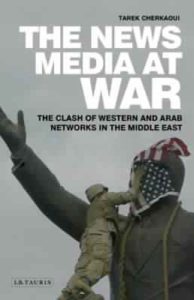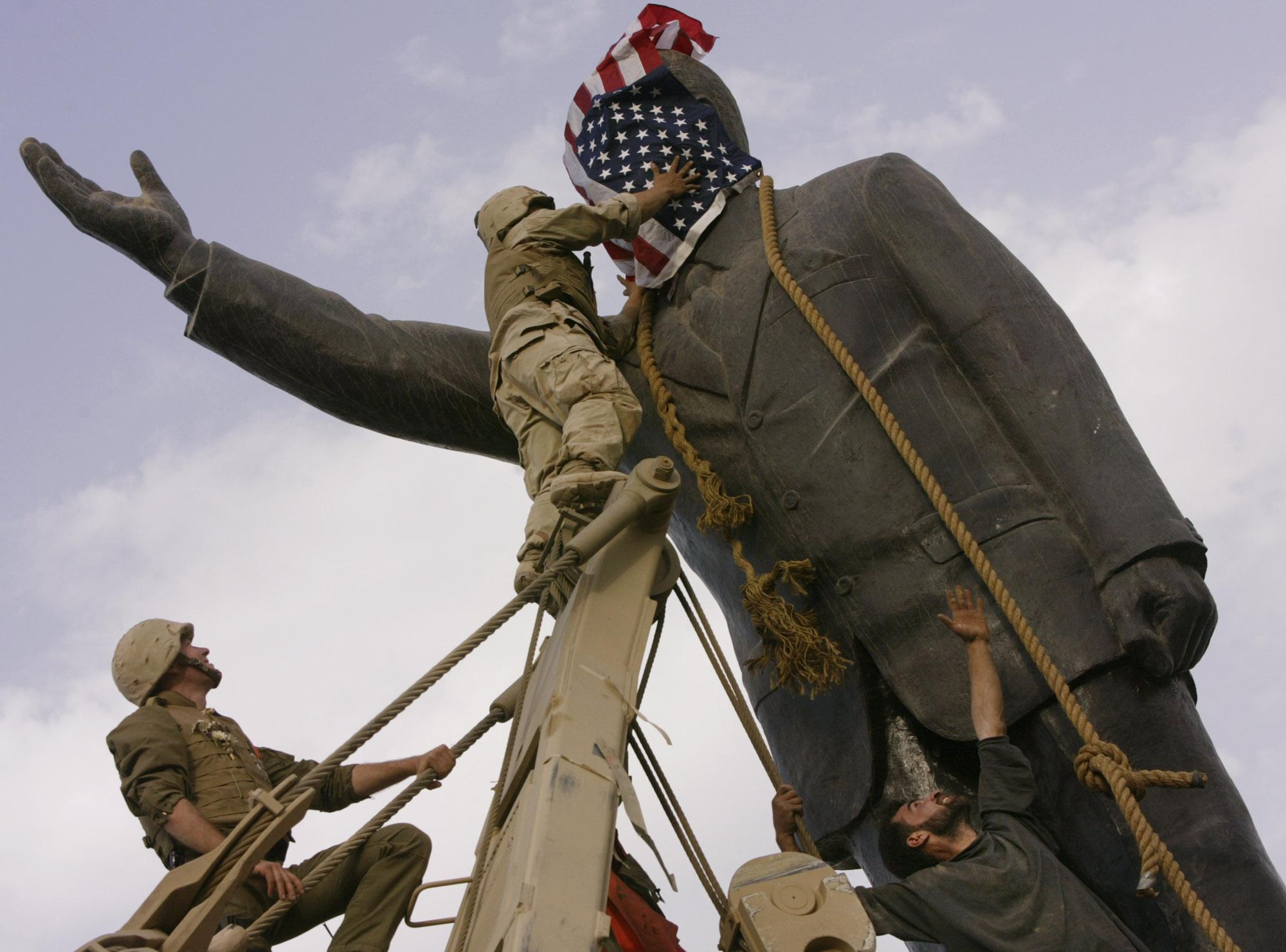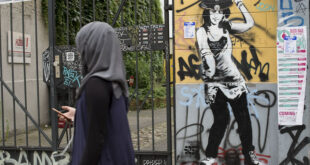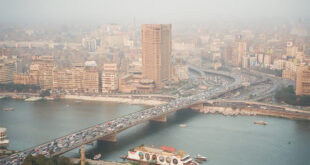News organizations are tested in many ways during war. Journalists covering combat must be knowledgeable and possess courage and resilience. Executives must commit the necessary resources, financial and other, to ensure comprehensive coverage. Editors and producers must familiarize themselves with the political and cultural background of the conflict to ensure their audience is provided with more than just superficial reporting.

These challenges were met with only limited success by the news media during the war in Iraq that began with the U.S. invasion in 2003. In The News Media at War, strategic communication expert Tarek Cherkaoui presents an excellent, provocative critique of Western (mostly American) and Arab coverage of that conflict.
“The news media” should not be viewed as a monolith. The identity of a news organization is shaped by financial, political, cultural, and other factors that are mostly unique to the society in which it is based. Cherkaoui focuses on how these characteristics affect framing, which he defines as “how a given news story is presented, and the related process of inclusion, exclusion, and emphasis, which is designed to make some portions of reality more salient than others.” (4) Many news consumers are profoundly affected by this, particularly in international news coverage, because they rely on news reports to fill in the often sizable gaps in their personal knowledge about distant events.
This is especially important during wartime, when a good-versus-evil dichotomy is so pronounced in news coverage, and when lives are at stake. As with many other aspects of the West’s perceptions of the Arab world, Orientalism affects framing, and during conflict Orientalist condescension slides easily into hatred. We can see this in how the term “terrorism” is used, for example. Cherkaoui notes that this “is a word which is deployed rhetorically and selectively for given purposes.” (60) Acts of terrorism are horrific, but the word leads to oversimplification and, in recent years, its selective use often lends to Orientalist labeling. It is useful to examine the incidents that are framed as acts of terrorism versus those that are not. Cherkaoui offers as an example the “attacks upon civilians in Nicaragua by the US-supported ‘contra’ rebels of the 1980s” that were “never denounced by mainstream media as terrorism.” He also notes that the 1982 massacre of Palestinian civilians in the Sabra and Shatilla camps “is rarely referred to as terrorist activity.” (60)
While Western media dominated global news dissemination, Arabs had few ways to articulate their own perspective on events. With the birth of the Al Jazeera satellite television channel in 1996 (and, before that, Egypt-based “Voice of the Arabs” radio), Arabs finally had the opportunity to view their lives through their own prism. This has contributed, writes Cherkaoui, to “communal consciousness and the reconstruction of Arab identity in the Arab world.” (101) Today, Arab satellite television channels offer a diverse array of choices for news. The perspectives may vary, but they all feature Arab journalism covering Arab news.
Cherkaoui analyzes the striking contrast between Al Jazeera and one of the West’s dominant television networks, CNN. After the attacks of September 11, 2001, the latter threw itself wholeheartedly into covering, with an implicitly approving tone, the growing militarization of American foreign policy. Like many other American news organizations, CNN adopted the U.S. government’s dominant frame, which was, writes Cherkaoui, “the inevitability of war and America’s preparation for it. Within this frame, simple themes were repeated by military and political elites, especially the demonization of Saddam Hussein. Demonization served to channel negative feelings against the Iraqi nation.” (127)
Al Jazeera, on the other hand, described the U.S. march toward war in terms of what it would mean not to Saddam Hussein, but rather to the millions of Iraqis who would bear the brunt of American anger. When the United States launched 800 cruise missiles at Iraq during the first two days of the conflict, CNN adopted the Pentagon’s term “Shock and Awe,” which makes war sound like an amusement park ride. Meanwhile, Al Jazeera ran the on-screen headline, “Baghdad is Burning,” as viewers watched destruction rain down on the Iraqi capital. (151-52)
Another example of contrasting frames occurred early in the war when, on a single day, three journalists were killed as the result of U.S. attacks. CNN framed the incidents as unconnected accidents, while Al Jazeera, who lost a journalist in the attacks, linked the three deaths and framed itself, notes Cherkaoui, as the “victim of its quest to provide straightforward facts” and as being “targeted because of telling the truth.” (205) Despite denials from US officials, Al Jazeera pressed its argument that the attacks were purposeful efforts to shut down broadcast content that did not correspond to the American narrative.
Cherkaoui summarizes the distinctions between the two channels’ coverage of the conflict this way: “Al Jazeera portrayed the American-led war as direct aggression against an Arab nation. They used the pan-Arab frame to describe the war as an ‘invasion,’ and after the fall of Baghdad as an ‘occupation.’ Al Jazeera focused on the human cost of the war and stressed the illegality of its prosecution. Overall, CNN was deeply imbued with Orientalist frames which portrayed Iraqis negatively, whereas Al Jazeera’s deployment of pan-Arab frames did not necessarily entail the demonization of Iraq’s foes.” (234)
The absence of a humanistic outlook in the CNN coverage is instructive about conflict journalism more broadly. Physically distant from the war zone, the American audience did not push back against the savagery of war being presented as entertainment, at least during the early phases of the war. Also, Cherkaoui observes that much of the CNN video featured a wide, distant perspective that showed buildings, not people, as targets. (166) This kind of “othering” defines the individual Iraqi as undeserving of compassion. (225)
Further, Cherkaoui points out that the CNN coverage was characterized by blurred lines between journalistic and military discourse. (163) CNN was among the American broadcasters that used former US military officers in the quasi-journalistic role of “analysts,” and their comments, not surprisingly, often sounded very much like the pronouncements coming from the Pentagon. In numerous instances throughout this war (and others), American news media have set aside their journalistic role in favor of becoming cheerleaders and apologists for the military. In the short run, the news organizations may be applauded by much of the public as being patriotic, but over the longer term this same public may realize that the journalists have failed to provide them with the information they need to understand war-related issues.
The News Media at War includes many lessons that journalists and news consumers should take to heart. War should not be an occasion for suspension of objectivity, and physical distance does not justify abdication of moral responsibility. Even the words used in coverage matter. Cherkaoui is particularly good at illustrating how semantic differences between Al Jazeera and CNN reporting helped shape perceptions of the war, providing detailed comparisons of terminology used by the two networks. For instance, while CNN used the terms “liberation troops” and “collateral damage,” Al Jazeera used “occupation troops” and “carnage.” (180)
Many books have been published examining the role of the news media during war. Cherkaoui’s volume stands out because of the balance he provides and the insights he offers—especially to his non-Arabic-speaking readers—about why an Arab channel’s approach to coverage of a war on Arab territory is so important. Tarek Cherkaoui has made a valuable contribution to the literature of media and war.
The News Media at War:
The Clash of Western and Arab Networks in the Middle East
By Tarek Cherkaoui
(London: I. B. Tauris, 2017)
308 pages, US$99
 Arab Media & Society The Arab Media Hub
Arab Media & Society The Arab Media Hub





